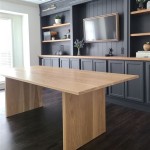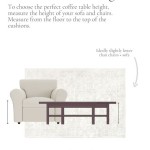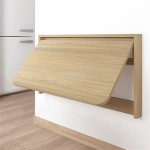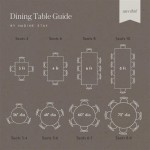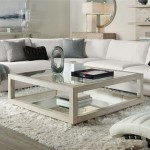The Enduring Appeal of the Mid-Century Modern Walnut Table
The mid-century modern aesthetic, a design movement spanning roughly from the mid-1940s to the late 1960s, continues to exert a powerful influence on contemporary interiors. At the heart of this style lies a dedication to simplicity, functionality, and natural materials. Among the furniture pieces that define this era, the mid-century modern walnut table stands out as a quintessential example of the movement's design principles. Its warm tones, clean lines, and enduring durability make it a coveted item for collectors and design enthusiasts alike. This article explores the key characteristics, historical context, and enduring appeal of the mid-century modern walnut table.
Key Characteristics of Mid-Century Modern Walnut Tables
The design of mid-century modern walnut tables is characterized by several distinct features that contribute to its unique aesthetic. A primary element is the use of walnut wood itself. Walnut was favored for its rich, dark color, its beautiful grain patterns, and its inherent strength. Unlike some other wood types, walnut offered a sophisticated and elegant look that complemented the overall design philosophy of the era.
Another defining feature is the emphasis on clean lines and geometric shapes. Tables typically feature simple, unadorned surfaces with minimal ornamentation. Legs are often tapered or splayed, providing stability while contributing to the table's light and airy appearance. The tables frequently employ a rectangular, oval, or circular shape, each offering a different aesthetic and functional advantage. Rectangular tables are well-suited for dining and work spaces, while oval and circular tables encourage conversation and create a more intimate atmosphere.
Construction techniques of mid-century modern walnut tables often involved careful joinery and attention to detail. Dovetail joints, mortise and tenon joints, and other techniques were used to ensure the table's structural integrity and longevity. The use of solid wood construction, or high-quality veneers over durable substrates, was common, reflecting a commitment to quality craftsmanship. Many pieces were finished with a clear coat to enhance the natural beauty of the walnut and provide protection against everyday wear and tear. The absence of excessive embellishment allowed the natural beauty of the wood and the simplicity of the design to take center stage.
The Historical Context of Mid-Century Modern Design
The mid-century modern movement emerged in the aftermath of World War II, a period of significant social and economic change. The war effort had spurred advancements in manufacturing techniques and materials, making these innovations available for consumer goods. There was a shift towards more functional and affordable designs, driven by the desire for comfortable and stylish living spaces that reflected the optimism and progress of the time.
Influences on the mid-century modern aesthetic were diverse, drawing from sources such as the Bauhaus school of design in Germany, Scandinavian modernism, and the work of American designers like Charles and Ray Eames, George Nelson, and Eero Saarinen. The Bauhaus emphasis on functionalism and simplicity resonated deeply with the mid-century modern ethos. Scandinavian designers, known for their use of natural materials and organic forms, also had a significant impact. American designers, many of whom had worked on wartime projects, brought their expertise in mass production and innovative materials to the design of furniture and other household goods.
The post-war economic boom in the United States created a demand for new homes and furnishings. Suburban development flourished, and families sought out furniture that was both stylish and practical for their modern lifestyles. Mid-century modern furniture, including walnut tables, became a symbol of this new era, representing a departure from the more ornate and traditional styles of the past. The affordability and availability of mass-produced furniture made it accessible to a wider segment of the population, contributing to its widespread popularity.
The Enduring Appeal of Walnut Tables in Contemporary Interiors
Despite originating several decades ago, the mid-century modern aesthetic continues to resonate with contemporary designers and homeowners. The clean lines, functional design, and natural materials of mid-century modern furniture make it a versatile choice for a wide range of interior styles. Walnut tables, in particular, offer a timeless elegance that complements both minimalist and more eclectic spaces.
Several factors contribute to the enduring appeal of mid-century modern walnut tables. One key factor is their versatility. Their simple design and neutral color palette allow them to be easily incorporated into various design schemes. They can serve as a focal point in a room or blend seamlessly with other furniture pieces. The warmth of the walnut wood creates a welcoming atmosphere, while the clean lines add a touch of sophistication.
Another significant factor is the emphasis on quality and craftsmanship. Mid-century modern furniture was often built to last, using durable materials and meticulous construction techniques. Many vintage walnut tables are still in excellent condition today, a testament to their enduring quality. The appreciation for well-made, sustainable furniture has grown in recent years, further enhancing the appeal of mid-century modern pieces. This also aligns with a growing trend towards incorporating vintage or antique pieces into modern interiors, adding character and history to contemporary spaces.
Moreover, the mid-century modern aesthetic represents a timeless elegance that transcends fleeting trends. Its focus on functionality, simplicity, and natural materials ensures that it remains relevant and appealing to successive generations. The clean lines and organic forms of mid-century modern furniture create a sense of calm and harmony, which is particularly desirable in today's fast-paced world. The design principles of mid-century modern emphasize the importance of creating comfortable and functional living spaces, making it a practical and stylish choice for modern homes.
The versatility of walnut also extends to its ability to complement a range of materials and textures. It pairs well with leather, wool, linen, and metal, allowing for a variety of design possibilities. A walnut table can be paired with upholstered chairs in a dining room, used as a coffee table in a living room, or serve as a desk in a home office. Its adaptability makes it a valuable addition to any interior.

Mid Century Modern Walnut Rectangular Wood Dining Table With Columnar Split Legs 95 Plinth For Cake Stand Made In Com

Extra Deep Mid Century Extendable Dining Table 72 92 Acorn

Homelegance 5926 76 7pc 7 Pc Darby Home Co Ahmet Walnut Finish Wood Mid Century Modern

Mid Century Dining Table

Truman Mid Century Modern Walnut 9pc Extendable Dining Table Collection

Michael Mid Century Modern Walnut Dining Table Collection

Modrest Depew Mid Century Modern Walnut Round Dining Table

Capet Mid Century 1525mm Walnut Wooden Dining Table Rectangle Tabletop For 6 Person Homary

Walnut Dining Table Mid Century Modern Large Danish Custom Room Etsy

Furniture Of America Pearlcrest Mid Century Modern Walnut Wood 70 8 In 4 Leg Oval Dining Table Seats Idf 3211wn T The Home

